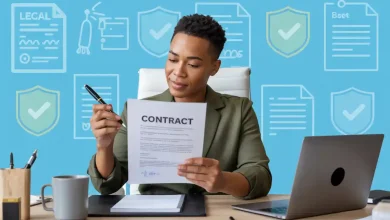Fine Print: Smart Secrets to Understanding Contracts
Unlocking Hidden Details: Your Easy Guide to Contract Clarity

Fine print is everywhere—on contracts, agreements, and even product packaging. It’s the small text at the bottom or back of a document that contains important rules, rights, and risks. Many people ignore the fine print because it’s hard to read or seems boring. But skipping the fine print can lead to surprises, extra costs, or even legal trouble. This guide will help you understand the fine print in simple, basic English, so you can make better decisions and protect yourself.
What Is the Fine Print?
The fine print is the part of a contract or agreement that is written in smaller or less noticeable text. It often includes special conditions, limits, and important information that is not in the main part of the document. The fine print can be found at the bottom of a page, in footnotes, or in a separate section.
Examples of fine print include:
- Rules for canceling a service
- Extra fees or charges
- Time limits for making changes
- Legal rights and responsibilities
Why is it called “fine print”?
The term comes from the old days when contracts were printed on paper, and important legal terms were put in smaller letters at the bottom. This made them easy to miss if you weren’t looking carefully.
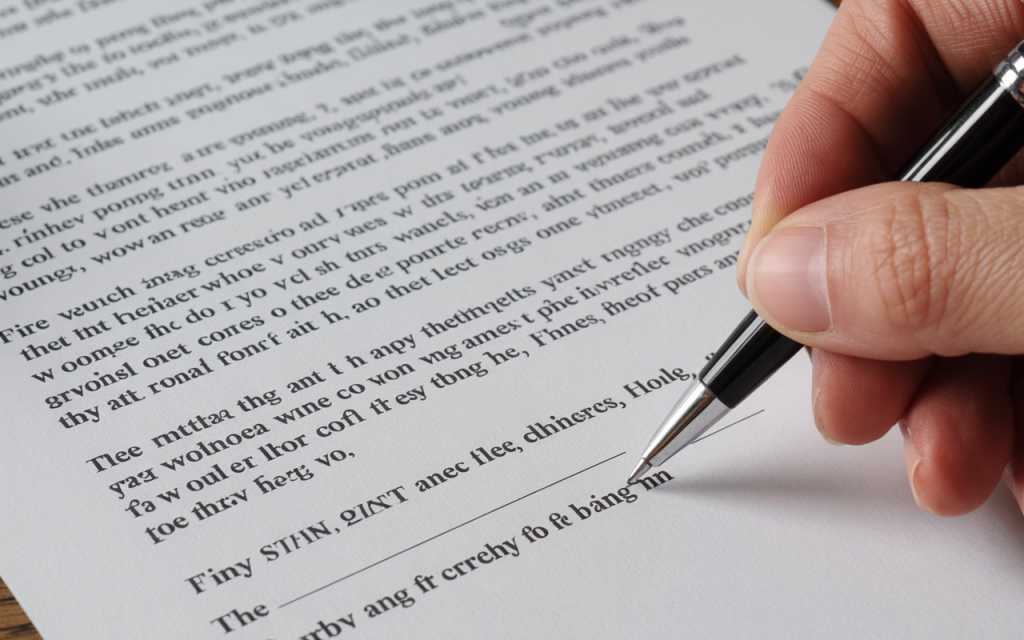
Why Is the Fine Print Important?
Reading the fine print is important because it can affect your rights and your wallet. Here are some reasons why you should always check the fine print:
1. Hidden Costs
The fine print may include extra fees or charges that are not mentioned in the main part of the contract. For example, a credit card might have a yearly fee that’s only mentioned in the fine print.
2. Rules and Limits
The fine print often explains what you can and cannot do, and what happens if you break the rules. For example, a gym membership might say you can only cancel in writing and within a certain time period.
3. Automatic Renewals
Some contracts automatically renew unless you cancel them in writing and within a certain time period. This is common with subscriptions for magazines, streaming services, or gym memberships.
4. Legal Rights
The fine print may limit your legal rights or require you to use arbitration instead of going to court. This means you might not be able to sue if something goes wrong.
5. Privacy and Data
The fine print often explains how your personal information will be used and shared. This is important for protecting your privacy.
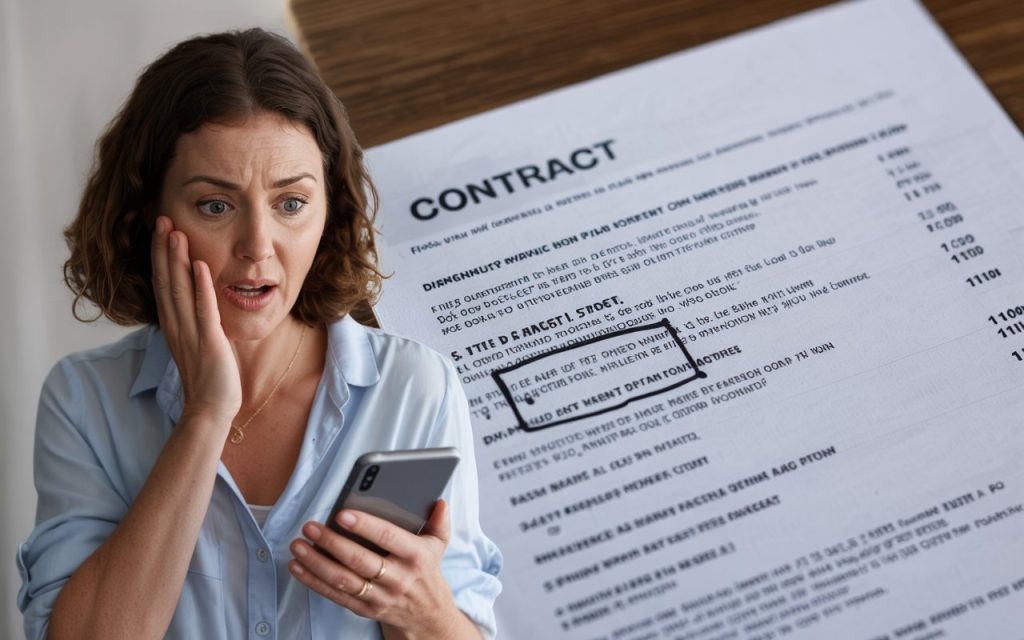
How to Spot the Fine Print
The fine print is not always easy to find. Here are some ways to spot it:
- Look for small or light-colored text
- Check the bottom or back of the page
- Look for headings like “Terms and Conditions” or “Important Information”
- Watch for footnotes or asterisks (*) that point to extra information
- Check online documents for hidden links or pop-up boxes
How to Read the Fine Print
Reading the fine print can be tricky, but these tips will help you understand it better:
1. Take Your Time
Don’t rush. Read every word carefully. If you’re in a hurry, you might miss something important.
2. Use a Highlighter
Mark important sections so you can find them later. This is especially helpful for long contracts.
3. Look Up Words You Don’t Know
Use a dictionary or the internet to understand legal terms. Some words in contracts have special meanings.
4. Ask Questions
If something is unclear, ask the other party or a lawyer for help. Don’t be afraid to ask for an explanation.
5. Check for Numbers and Dates
Pay attention to deadlines, fees, and renewal dates. These are often hidden in the fine print.
6. Look for “Red Flags”
Watch out for terms like “automatic renewal,” “early termination fees,” or “limited liability.” These can mean extra costs or less protection for you.
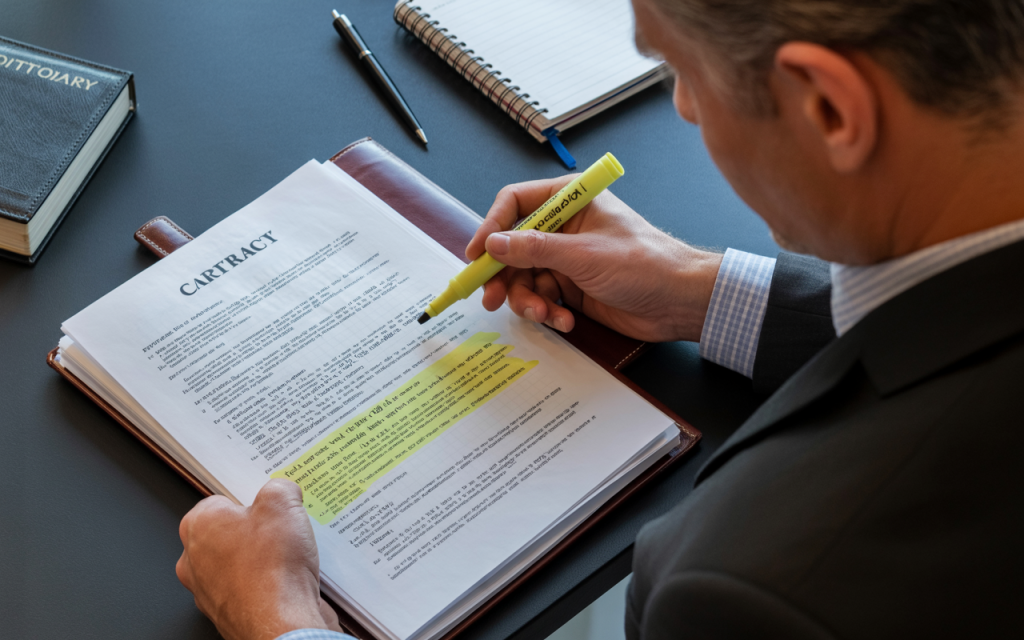
Common Contract Terms Explained
Here is a table of common terms you might find in the fine print and what they mean:
| Term | Meaning |
|---|---|
| Offer | A promise to do something if the other party agrees |
| Acceptance | Agreeing to the terms of the offer |
| Consideration | Something of value exchanged between the parties |
| Breach | Breaking the terms of the contract |
| Damages | Money paid for breaking the contract |
| Termination | Ending the contract |
| Renewal | Extending the contract for another period |
| Force Majeure | Events that allow a party to not fulfill the contract (like disasters) |
| Indemnity | Agreement to pay for losses or damages |
| Arbitration | Using a neutral person to solve a dispute instead of a court |
How to Protect Yourself from the Fine Print
You can protect yourself from problems in the fine print by following these steps:
1. Read Everything Before You Sign
Don’t sign a contract until you have read and understood all of it. If you’re not sure, ask for time to review it.
2. Keep a Copy
Always keep a copy of the contract for your records. This is important if there is a dispute later.
3. Watch for Changes
If the other party changes the contract, make sure you understand and agree to the changes. Don’t accept changes that you don’t understand.
4. Don’t Be Afraid to Negotiate
If you don’t like a term in the fine print, ask to change it before you sign. Many contracts can be changed if both parties agree.
5. Get Help If You Need It
If the contract is complicated or involves a lot of money, talk to a lawyer. A lawyer can help you understand your rights and options.

Real-Life Examples of Fine Print Problems
Here are some real-life examples of how the fine print can cause problems:
1. Gym Memberships
Many people sign up for gym memberships without reading the fine print. Later, they find out they are locked into a contract for a year or more and must pay a fee to cancel early.
2. Credit Cards
Credit card agreements often have important information in the fine print, such as fees, interest rates, and rules for late payments. If you don’t read it, you might be surprised by extra charges.
3. Online Services
Free trials for online services often require you to cancel before a certain date, or you will be charged automatically. The fine print explains these rules.
4. Insurance Policies
The fine print in insurance policies explains what is covered and what is not. If you don’t read it, you might not be covered when you need it most.
5. Car Rentals
Car rental agreements often have extra charges for insurance, fuel, or late returns. The fine print explains these fees.
What to Look for in the Fine Print
When you read the fine print, pay attention to these key areas:
1. Fees and Charges
Look for extra costs, late fees, or penalties. These are often hidden in the fine print.
2. Cancellation and Renewal
Check how and when you can cancel, and if the contract renews automatically. This is common with subscriptions and services.
3. Limits and Exclusions
See if there are any limits on your rights or what is not covered. For example, an insurance policy might not cover certain types of damage.
4. Dispute Resolution
Find out how disputes will be handled (court, arbitration, etc.). Some contracts require you to use arbitration instead of going to court.
5. Privacy and Data
Check how your personal information will be used and protected. This is important for your privacy.
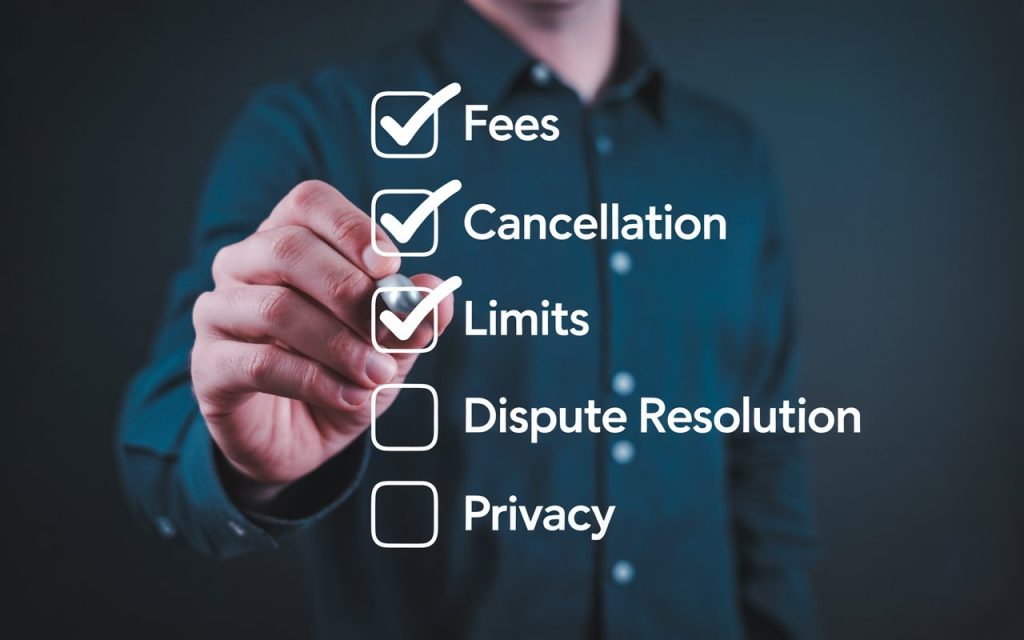
How to Deal with Unfair Fine Print
Sometimes, the fine print is unfair or misleading. Here’s what you can do:
1. Don’t Sign
If you don’t agree with the terms, don’t sign the contract. It’s better to walk away than to agree to something unfair.
2. Negotiate
Ask to change or remove unfair terms before you sign. Many companies are willing to negotiate.
3. Complain
If you think the fine print is unfair or deceptive, you can complain to a consumer protection agency or regulator.
4. Get Legal Advice
A lawyer can help you understand your rights and options. If you think you’ve been treated unfairly, a lawyer can help you take action.
The Future of Fine Print
As more contracts move online, the fine print is still important. Companies are required to make their terms clear and easy to understand, but you still need to read them carefully. New laws and technology may make it easier to spot and understand the fine print in the future.
1. Digital Contracts
Many contracts are now signed online. The fine print is often in a pop-up box or a separate link. Make sure you read it before you click “agree.”
2. Plain Language
Some companies are starting to use plain language in their contracts. This makes the fine print easier to understand.
3. Consumer Protection
New laws are being made to protect consumers from unfair fine print. These laws require companies to be more transparent about their terms.

Frequently Asked Questions (FAQs)
Q: Why is the fine print so hard to read?
A: The fine print is often written in small, dense text and uses legal language to make it hard for the average person to understand. This can hide important information or risks.
Q: What happens if I don’t read the fine print?
A: If you don’t read the fine print, you might miss important rules, fees, or limits. This can lead to extra costs, legal problems, or losing your rights.
Q: Can I change the fine print in a contract?
A: You can ask to change the fine print before you sign the contract. If the other party agrees, the changes should be written into the contract.
Q: What should I do if I don’t understand the fine print?
A: If you don’t understand the fine print, ask the other party to explain it. If it’s still unclear, talk to a lawyer for help.
Q: Are all contracts required to have fine print?
A: Not all contracts have fine print, but most official agreements and service contracts do. The fine print is where companies put important legal terms and conditions.
Q: How can I tell if the fine print is unfair?
A: Look for terms that seem one-sided, like high fees, strict cancellation rules, or limits on your rights. If something feels unfair, it probably is.
Q: What should I do if I signed a contract without reading the fine print?
A: If you already signed, check the contract for a cooling-off period or cancellation policy. If you’re stuck, talk to a lawyer or consumer protection agency.
Q: Are there tools to help me understand the fine print?
A: Yes, there are apps and websites that can help you read and understand contracts. Some lawyers also offer free reviews for consumers.
Summary Table: Fine Print Checklist
| What to Check | Why It Matters |
|---|---|
| Fees and charges | Avoid unexpected costs |
| Cancellation and renewal | Know how to cancel or avoid auto-renewal |
| Limits and exclusions | Understand what is not covered |
| Dispute resolution | Know how problems will be solved |
| Privacy and data | Protect your personal information |
Additional Tips for Reading Contracts
1. Read the Entire Contract
Don’t just read the main points. Go through every section, including the fine print.
2. Take Notes
Write down any questions or concerns you have. This helps you remember what to ask about.
3. Compare Contracts
If you have more than one option, compare the fine print in each contract. This can help you choose the best deal.
4. Be Wary of Pressure
If someone is rushing you to sign, be careful. Take your time to read and understand everything.
5. Use Technology
There are apps and tools that can help you read and understand contracts. These can be helpful if you’re not familiar with legal language.
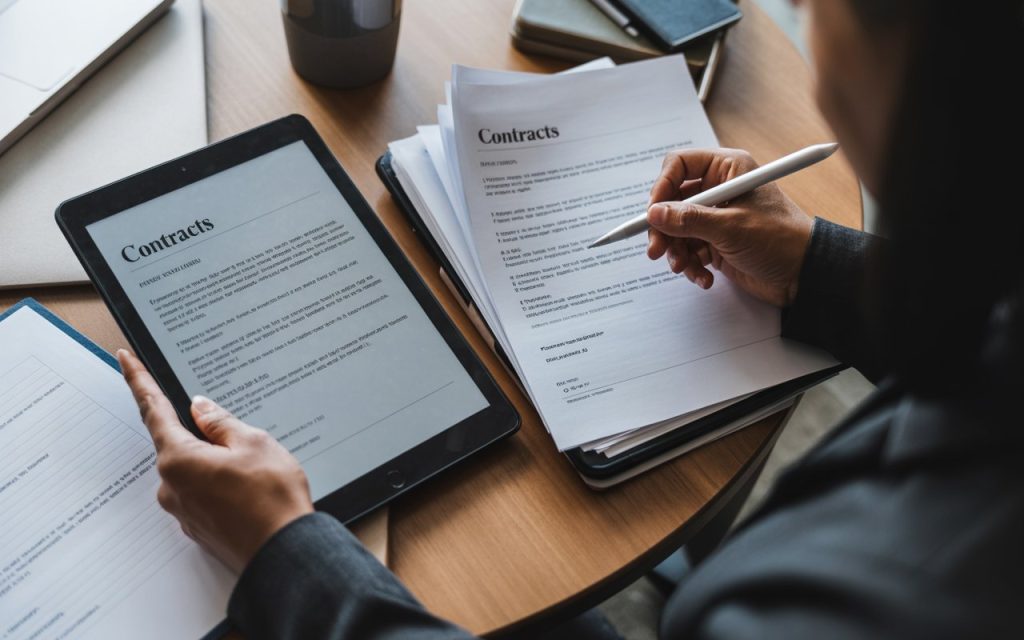
How to Teach Others About the Fine Print
You can help your friends and family avoid fine print problems by sharing these tips:
- Explain what the fine print is and why it matters
- Show them how to spot and read the fine print
- Encourage them to ask questions and get help if needed
- Share real-life examples of fine print problems
The Legal Side of Fine Print
The law says that contracts must be fair and clear. If the fine print is misleading or unfair, it might not be legal. Some countries have laws to protect consumers from unfair contract terms. If you think you’ve been treated unfairly, you can complain to a consumer protection agency or talk to a lawyer.
Tools and Resources for Understanding Fine Print
There are many tools and resources to help you understand the fine print:
- Legal dictionaries: Explain legal terms in plain language
- Consumer protection websites: Offer advice and sample contracts
- Lawyers: Can review contracts and explain your rights
- Apps and websites: Help you read and understand contracts

Final Thoughts
The fine print is a powerful part of any contract. It can protect your rights, but it can also hide important risks and costs. By taking the time to read and understand the fine print, you can make smarter decisions and avoid surprises. Always read everything before you sign, ask questions if you don’t understand, and keep a copy of your contract. With these simple steps, you can take control of the fine print and protect yourself in any agreement.

